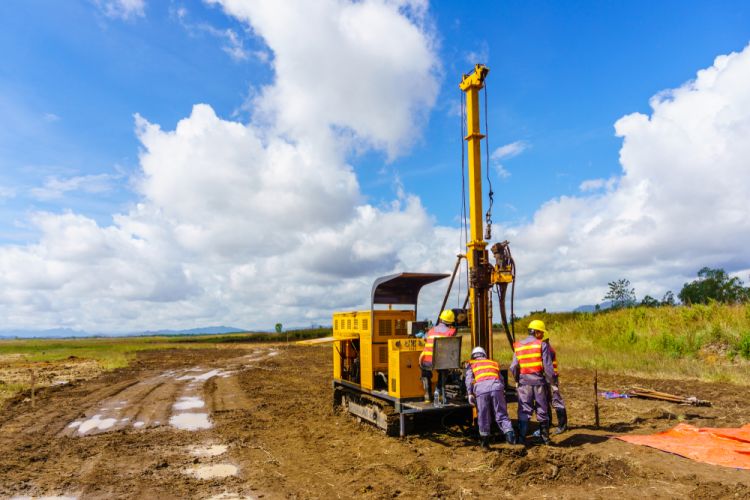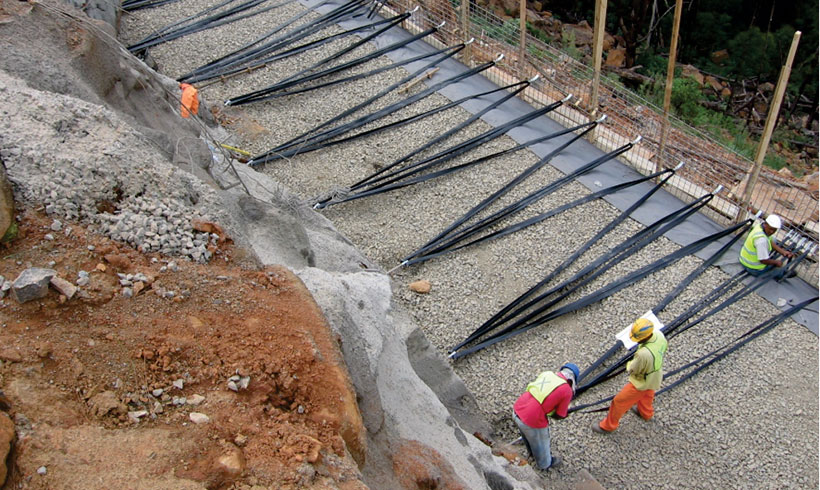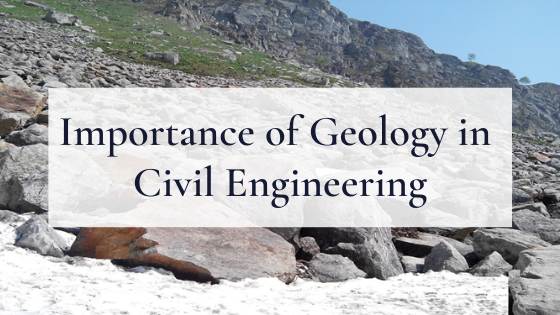The smart Trick of Geotechnical Engineering For Construction Projects That Nobody is Discussing
Examine This Report on Geotechnical Engineering For Construction Projects
Table of ContentsThe Facts About Geotechnical Engineering For Construction Projects RevealedWhat Does Geotechnical Engineering For Construction Projects Mean?The Ultimate Guide To Geotechnical Engineering For Construction ProjectsAn Unbiased View of Geotechnical Engineering For Construction ProjectsSee This Report on Geotechnical Engineering For Construction ProjectsGeotechnical Engineering For Construction Projects - An Overview
The duty of geotechnical engineering considerably handles understanding the attributes of dirt and rock, which might differ considerably by their thickness, moisture material etc. These features need to be checked out by geotechnical designers to anticipate their movements under different situations. The security in addition to stability of frameworks are affected by soil problems, making this analysis essential., in addition to how they communicate with constructions that have actually been erected on or within them, is one of the primary explanations for why geotechnical design is essential.
In addition to structural preparation and building and construction, geotechnical engineering is likewise important to the restoration and upkeep of pre-existing structures. Age-related destruction or added troubles can affect a structure's security and performance. Environmental security is completed through geotechnical engineering. Expertise in air, water, and soil top quality upkeep is put to utilize by geotechnical engineers to lessen the adverse results of projects.
To sum up, geotechnical design is a crucial self-control that protects the durability and integrity of civil infrastructure. Geotechnical designers add to making building projects reliable all over the world by comprehending the practices of earth products and using ideal preparation techniques.
Indicators on Geotechnical Engineering For Construction Projects You Need To Know
The foundational stability of any kind of project is vital. Geotechnical design plays a critical duty in ensuring that structures are built on solid ground, actually and figuratively. By examining soil, rock, and subsurface problems, geotechnical engineers supply essential insights that help in the layout, construction, and maintenance of buildings and framework.

Geotechnical Engineering For Construction Projects Fundamentals Explained
Research laboratory screening: Establishing the homes of dirt and rock. A number of high-profile building and construction jobs have actually effectively utilized geotechnical design to guarantee their security and security.

As a leader in geotechnical engineering, BECC Inc. is committed to providing innovative and efficient solutions that fulfill the highest possible standards of quality and safety and security. For more details on just how BECC Inc. can sustain your next construction task, call us today and allow us assist you construct on strong ground.
William Rankine, a designer and physicist, established an alternate to Coulomb's earth stress concept. Albert Atterberg created the clay consistency indices that are still utilized today for soil classification. In 1885, Osborne Reynolds identified that shearing causes volumetric expansion of dense products and contraction of loosened granular materials. Modern geotechnical design is stated to have started in 1925 with the publication of Erdbaumechanik by Karl von Terzaghi, a mechanical designer and geologist.
Excitement About Geotechnical Engineering For Construction Projects
Terzaghi also established the structure for concepts of bearing capacity of foundations, and the theory for forecast of the price of negotiation of clay layers due to loan consolidation. After that, Maurice Biot fully developed the three-dimensional soil combination concept, expanding the one-dimensional version formerly created by Terzaghi to extra general hypotheses and introducing the collection of standard equations of Poroelasticity.
Geotechnical designers explore and determine the properties of subsurface conditions and materials. They also make corresponding earthworks and maintaining frameworks, passages, and framework foundations, and may manage and review sites, which may even more involve site surveillance as well as the risk analysis and reduction of natural dangers - Geotechnical Engineering for Construction Projects. Geotechnical designers and design geologists carry out geotechnical examinations to obtain details on the YOURURL.com physical residential or commercial properties of her latest blog soil and rock underlying and nearby to a site to make earthworks and foundations for proposed frameworks and for the repair of distress to earthworks and frameworks triggered by subsurface conditions.
Some Ideas on Geotechnical Engineering For Construction Projects You Should Know
, which uses a thick-walled split spoon sampler, is the most common means to accumulate disrupted samples.

Commonly, the user interface's precise geometry is unknown, and a streamlined interface geometry is assumed. Finite inclines need three-dimensional designs to be analyzed, so most slopes are examined assuming that they are infinitely wide and can be stood for by two-dimensional models.
How Geotechnical Engineering For Construction Projects can Save You Time, Stress, and Money.
The empirical method might be called adheres to: General expedition adequate to establish the harsh nature, pattern, and properties of deposits. Evaluation of one of the most probable conditions and the most undesirable imaginable deviations. Creating the design based on a working theory of behavior anticipated under the most possible problems. Option of amounts to be observed as construction proceeds and calculating their expected worths based on the functioning hypothesis under the most unfavorable conditions.
Dimension of amounts and analysis of real conditions. It is improper for tasks whose style can not be altered throughout building.